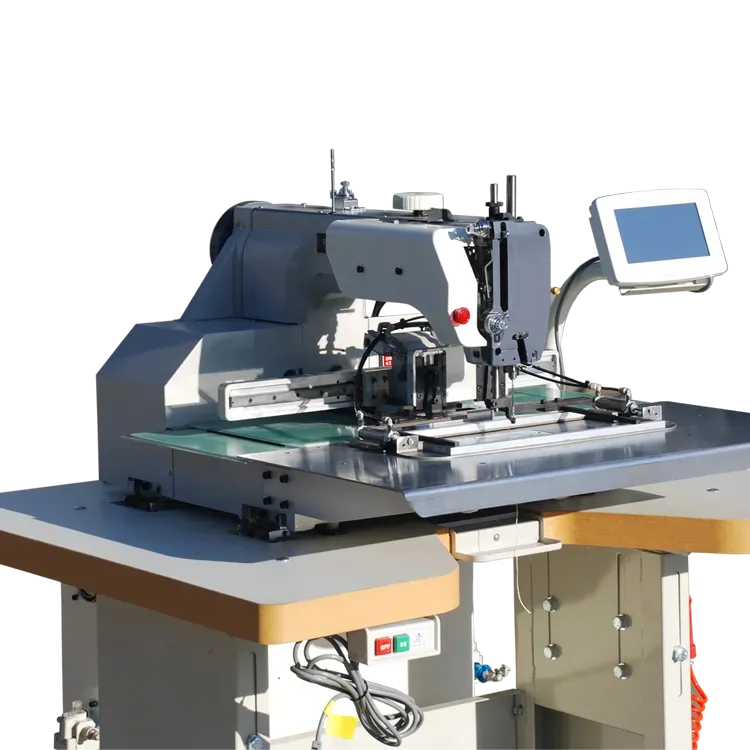Advancements in Automated Sewing Machine Technology for Enhanced Efficiency and Precision
The Rise of Automation in the Sewing Machine Industry
In the ever-evolving world of manufacturing, automation has emerged as a revolutionary force that is transforming traditional industries, including textiles and garment production. Among the most significant advancements in this field is the automation of sewing machines. This technological innovation has not only streamlined the production process but has also brought about improved efficiency, reduced labor costs, and enhanced product quality.
Automated sewing machines have been developed to perform a range of tasks that were once reliant on manual labor. These machines are equipped with sophisticated software and robotics, allowing them to execute complex stitches and patterns with remarkable precision. For instance, a modern automated sewing machine can seamlessly switch between different stitch types or adjust the fabric tension automatically, which reduces the time required for setup and minimizes human error.
The Rise of Automation in the Sewing Machine Industry
Moreover, automated sewing machines contribute to cost savings for manufacturers. While the initial investment in automation technology can be substantial, the long-term benefits often outweigh the costs. Reduced labor expenses are a significant factor, as fewer workers are needed to operate machines. Additionally, the improved efficiency of automated processes leads to less fabric waste and fewer defects, further enhancing profitability.
automation sewing machine

Quality is another area where automation shines. Automated machines are designed to maintain consistent quality across production runs, which is a challenge in manual stitching. The precision of automated sewing minimizes variations that can arise from human error, ensuring that each product meets the specified standards. This level of consistency not only improves customer satisfaction but also strengthens a brand’s reputation in the market.
Despite the advantages, the rise of automation in the sewing industry also raises concerns, particularly regarding job displacement. As machines take over tasks traditionally performed by humans, there is a fear that many workers may find themselves redundant. However, it is essential to consider that automation does not entirely eliminate jobs; rather, it shifts the nature of work. Workers may transition to more skilled positions that involve overseeing automated systems, performing quality checks, and managing production workflow.
Additionally, the integration of automation in sewing presents an opportunity for innovation. Companies can focus on developing new styles and designs rather than getting bogged down in repetitive tasks. This shift towards design and creativity can lead to the emergence of unique products that appeal to consumers and cater to fast-changing fashion trends.
In conclusion, the automation of sewing machines represents a significant leap forward in the textile and garment manufacturing industry. With increased productivity, cost savings, and enhanced quality, automated sewing machines are set to play a crucial role in shaping the future of this sector. While the transition may pose challenges, particularly in terms of workforce adaptation, the potential for innovation and quality improvement makes this a promising evolution. Embracing automation not only benefits manufacturers but also has the potential to enrich the entire fashion ecosystem, ultimately leading to better products for consumers.
-
Industrial Cylinder Arm Sewing Machine: Revolutionizing Heavy-Duty SewingNewsJul.28,2025
-
Cylinder Arm Sewing Machine: Perfect for Special Sewing ApplicationsNewsJul.28,2025
-
Cylinder Bed Sewing Machine: Essential for Sewing Complex MaterialsNewsJul.28,2025
-
Heavy Duty Sewing Machine: The Essential Tool for Industrial ApplicationsNewsJul.28,2025
-
Computerized Pattern Sewing Machine: Revolutionizing Precision StitchingNewsJul.28,2025
-
Heavy Duty Industrial Sewing Machine: Power Meets PrecisionNewsJul.28,2025
-
Leather Sewing Machine: The Industrial Standard for Tough MaterialsNewsJul.18,2025





























